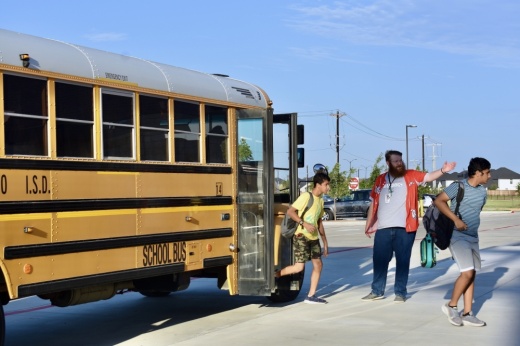The budget was unanimously approved by the district's board of trustees May 15 and was discussed by trustees through a series of workshops that started in February.
“I’m proud to sit in this chair and represent a district that does not shy away from providing the best education to our 67,000 students,” board President Dynette Davis said. “I believe we made a very right and important decision today for the future of Frisco ISD, and the students and families that we will serve.”
The overview
Here is a breakdown of what is included in the $963.78 million budget:
- $752.51 million in the general fund
- $32.02 million in the child nutrition fund
- $179.26 in the debt services fund
- $30.81 million potential shortfall in the general fund
Without additional state funding, FISD officials are expecting to use rainy day funds to mitigate the size of the district’s potential $30.81 million shortfall.
Rainy day funds are part of FISD’s reserve fund balance, which is similar to a savings account the district has set aside. Those funds are used to cover unexpected expenses, such as catastrophes or other emergencies, said Kimberly Smith, FISD’s chief finance and strategy officer.
Officials are expecting to pull $7 million out of FISD’s total $77 million reserves for FY 2023-24. An additional $23 million is expected to be pulled from the fund for the FY 2024-25 budget.
What they’re saying
The budget’s potential revenue shortfall is not considered a forecast deficit for FY 2024-25, Smith said during a May 13 board meeting. The district typically has about $10 million to $15 million each year that is not spent in the proposed budget, she said.
Several revenue-generating options are being evaluated for FY 2024-25 and FY 2025-26, Smith said. This includes:
- A voter-approved tax rate election to generate about $12 million
- An attendance campaign to generate $1.5 million
“It’s important for learning; money is secondary,” she said. “There is a detrimental impact to student’s learning if they don’t come to school.”
Future options the district will explore include opening enrollment to students outside of the district and the use of tax increment reinvestment zone, or TIRZ, funds for facility operations costs.
Tax increment reinvestment zones collect growth in property tax value of a certain area. The partnerships made possible through the TIRZ have allowed FISD to avoid issuing debt to build its own facilities, district officials said.
These changes cannot be done quickly by the district, Smith said, but district officials are exploring them.
“We are making this recommendation [for the budget] with the understanding that we have not stopped working on this budget, and we will not stop striving for a more sustainable, long-term financial plan,” Smith said.
What else?
The district’s compensation plan for the 2024-25 school year includes a 3% raise for eligible employees. It also includes a new teacher salary starting at $60,500 for those with zero years of experience. The board approved the compensation plan May 15.
Looking ahead
The district's FY 2024-25 tax rate will be presented to trustees in August, Smith said. The proposal is to increase the district’s maintenance and operations tax rate, which funds payroll and other operational costs, by $0.03165 per $100 valuation. The M&O tax rate would be $0.78915 per $100 valuation in FY 2024-25, if approved.
This would trigger a voter-approval tax rate election, also known as a VATRE, which is used when a district needs to increase its maintenance and operations tax rate above a prescribed threshold.
FISD officials will also begin discussions of a future bond program in the fall, Smith said.





